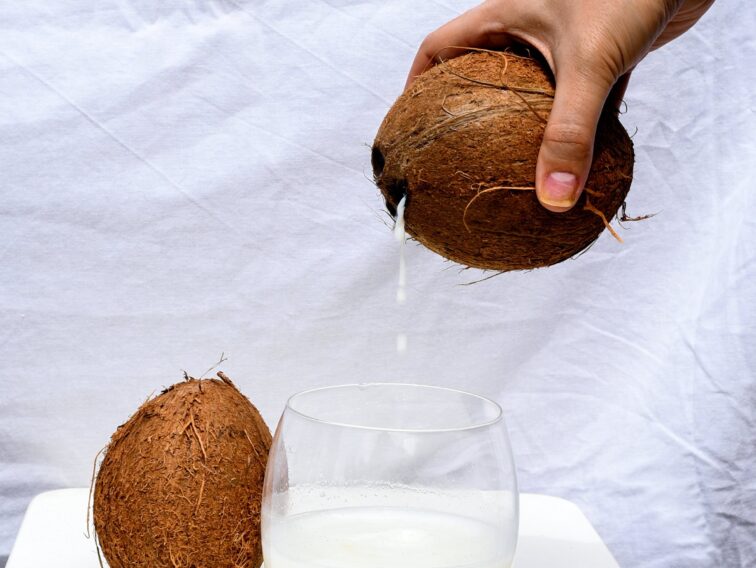There are 4 vital minerals, called primary minerals, that form the backbone of a healthy metabolism, mitochondria, adrenals, thyroid, blood sugar balance and nervous system. They are calcium, magnesium. sodium and potassium.
These minerals are well known, but their massive effect on our energy production and overall health is not often discussed.
When these 4 primary minerals are low, healing is an uphill battle. Your body is too challenged and depleted to do the work required.
Focusing some time on bolstering these minerals will not only raise energy levels and stabilize mood and emotional health, but also give the body the resources it needs to repair itself.
Many people, understandably out of anxiety and desperation, do healing protocols when their body is not ready for it. If you’re in this situation, preparing your body for healing will boost your chances of recovery.
There are many ways to support and balance the 4 primary minerals, but this blog post will focus on how to replenish with food.
It will explain what each mineral does for us and which foods help restore them. Supplementing minerals from pills or tinctures can backfire if you don’t know your current mineral status. You can lower one mineral by adding too much of another. And if you don’t supplement the right combination of minerals together then some minerals can’t get into the cells. I will be writing more about this in future blog posts.
Food is a good delivery system for minerals because it’s hard to over supplement.
If you want to know the status of your minerals, the hair tissue mineral analysis test (HTMA) is the best test to measure them. Blood tests don’t give accurate results because of their static nature. They will give you a snapshot of levels in that moment, while the HTMA will provide a long-term view over what’s been happening in your body over the past 3 months.
To do the HTMA test you need a teaspoon of hair cut from the scalp (1 inch). And the hair can’t be coloured or chemically treated within the last 2 months.
The role of each mineral
Magnesium
Every cell requires magnesium. It regulates blood sugar and metabolism. It’s the anti-stress mineral. It could appear normal in blood work when it’s not.
Magnesium fuels mitochondria (which produce our energy), relaxes muscles, helps nutrients get into cells. The heart and brain have the highest concentrations of magnesium. And it’s probably one of the most popular and supplemented minerals, but one should be cautious about over supplementing this particular minerals because too much can lower calcium.
Also, when magnesium is too high it can cause diarrhea, overwhelm, low blood pressure and confusion.
When magnesium is too low it can lead to anxiety, panic, fear, anger, fatigue and an irregular heartbeat.
Foods that replenish magnesium are anchovies, avocado, plantain, banana, hemp, spinach, dark chocolate, almonds. Craving chocolate may be a result of magnesium deficiency.
The best supplement sources of magnesium is glycerinate (citrate and oxide help move the bowels but are not easily absorbed.)
Calcium
Calcium impacts glucose and insulin balance. When it is too high, this is called a calcium shell, and can negatively impacts the thyroid. Calcium is most known for supporting bone and tooth health, but when you over supplement calcium, it can store the mineral in vital organs and keep them out of the bones.
When calcium is too high it can cause constipation, kidney stone and gallstones, exhaustion from stress, depression and apathy.
When calcium is too low it can lead to anxiety, an alarm state in the nervous system (fight or flight) muscle cramps, insomnia and osteoporosis.
Calcium and magnesium are the calming minerals and need to be in balance to support a safe-feeling nervous system. When calcium is too high (calcium shell) it shows that the nervous system is in a freeze state, when one cocoons themselves off from the world, forming a wall around their heart. This state is not only associated with emotional suffering, apathy and numbness but also exhaustion and fatigue.
Foods that can replenish calcium are sardines, bone broth, egg yolks, carrot juice, greens and dairy.
Sodium
Sodium helps balances fluids in the body, it regulates and is regulated by the adrenals. It influences blood pressure and sodium chloride converts to stomach acid.
When it is too high you can have edema, water retention/swelling, headaches, high blood pressure, nervousness and irritability.
When it is too low you can experience adrenal issues, anxiety, fear, depression, apathy, digestive issues (bloating, low HCL, poor protein digestion), low blood pressure, dizziness, allergies, urinary frequency and weakness.
Foods that replenish sodium are celery and celery juice, artichokes, eggs, animal products, sauerkraut and unrefined sea salt. If you are low, don’t increase your salt intake too fast. Increase it slowly to avoid a response of whole body dryness.
Potassium
The body has the highest demand for potassium. It need more than 4000 mg daily. This mineral has a sea saw relationship with sodium. When it goes up sodium goes down and vice versa. It also assists in stomach acid secretion.
When it is too high it can cause depression, high blood sugar, heart irregularities, muscle spasms and weakness.
When it is too low it can lead to constipation, fatigue, low blood sugar, low blood pressure, burnout, kidney stones, water retention, skin problems, muscle weakness and allergies.
Foods that replenish potassium are coconut water, milk, celery and celery juice, potatoes, tomatoes, bananas, stinging nettles, avocados and dates.
A banana only has about 400 mg of potassium depending on the size.
Because of the bod’s high demand, it’s not easy to get the daily recommended amount of potassium. Here is a recipe for homemade potassium broth to naturally raise levels in the body.
Recipe for potassium broth
Drink 2-4 cups daily, spread out over the day. Each cup contains approximately 750 mg. of potassium.
Notes: Using organic ingredients will increase the potassium content to approximately 1100 mg./cup. Magnesium carries potassium into the cells, and kelp contains a fair amount of magnesium. If you can’t get kelp locally, you can mail-order it from Maine Coast Sea Vegetables in bulk. Otherwise, take a magnesium supplement or eat high-magnesium foods within an hour of drinking the broth. People with MCAS should avoid or be cautious with this broth.
Ingredients
6 medium Russet potatoes
6 celery stalks
1 bunch parsley
1 medium parsnip
2 medium carrots
1 oz. kelp/kombu
12 cups water
ginger root, 5 1-in. slices
Italian seasonings blend for flavor (optional)
1. Measure water into a 6 qt pot, then cover. Bring water to a boil.
2. While the water heats up, wash the produce gently. (Hard scrubbing removes minerals found in the vegetables’ skins).
3. Peel potatoes to a depth of 1/8 in. Set potato bodies aside for other use, or discard them.
4. Cut other vegetables in half so they will fit into the pot.
5. When the water boils, put all veggies (except potato) and seasoning into the water.
6. Bring broth to a boil, with the lid on, again, then simmer, with the lid on, for 1.5 hrs.
7. Add the ginger slices; then continue simmering with the lid on for 30 min.
8. Remove large vegetable matter, then allow small vegetable matter to settle for 5 minutes with the lid on.
9. Ladle into canning jars (fill to the neck). This will allow you to expose smaller portions of the broth to airborne bacteria for less time, preventing premature
spoiling. To get the last of the broth, pour it through the mesh strainer.
Why minerals matter
Don’t overlook your mineral status, it is the backbone of health because many of the body’s metabolic functions depend on mineral status.
To support the body’s stress response, resiliency and healing capacity we must look after our mineral stores and work to balance them to increase energy and metabolic efficiency. And to put the body and adrenals in a healing state.
Minerals and electrolytes are often supplemented when people transition to a low carb or keto diet, to avoid the uncomfortable symptoms of “carb flu”.
Stomach acid, which is a root cause of pathogenic overgrowth (SIBO, dysbiosis, parasites, candida) in the gut, is dependant on good mineral balance also, because minerals are physical building blocks of stomach acid.
I’ve added HTMA testing to my services because it’s good to balance minerals before starting any healing protocol. This will improve the chances of success.
Minerals help support the thyroid and adrenals, which are essential in regulating inflammation and metabolism.
Next week I’ll be talking about mineral ratios. The ratio of minerals in your body can tell you much about how the different systems in the body are functioning and how they support the gut.


